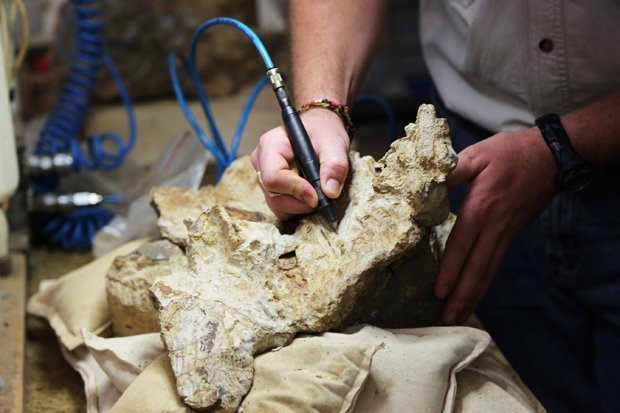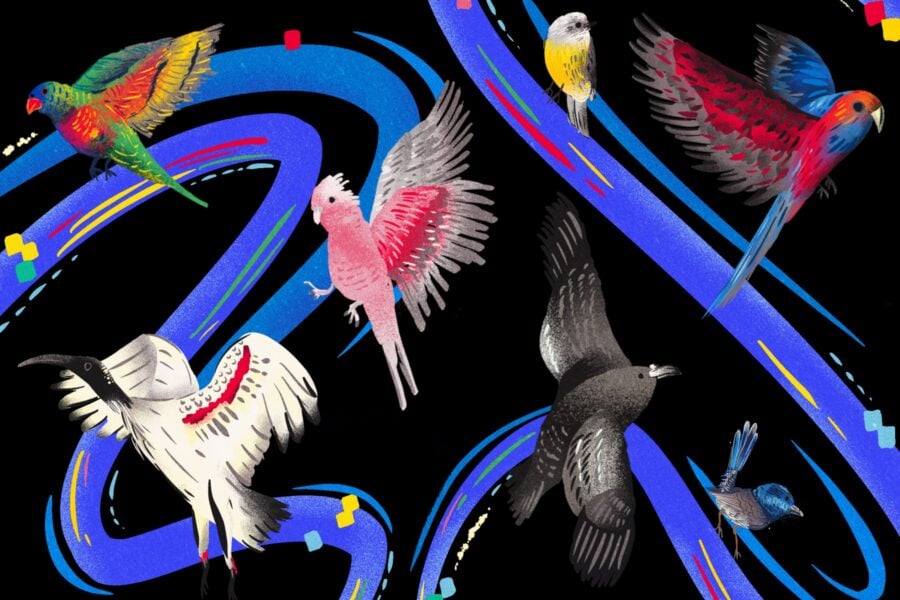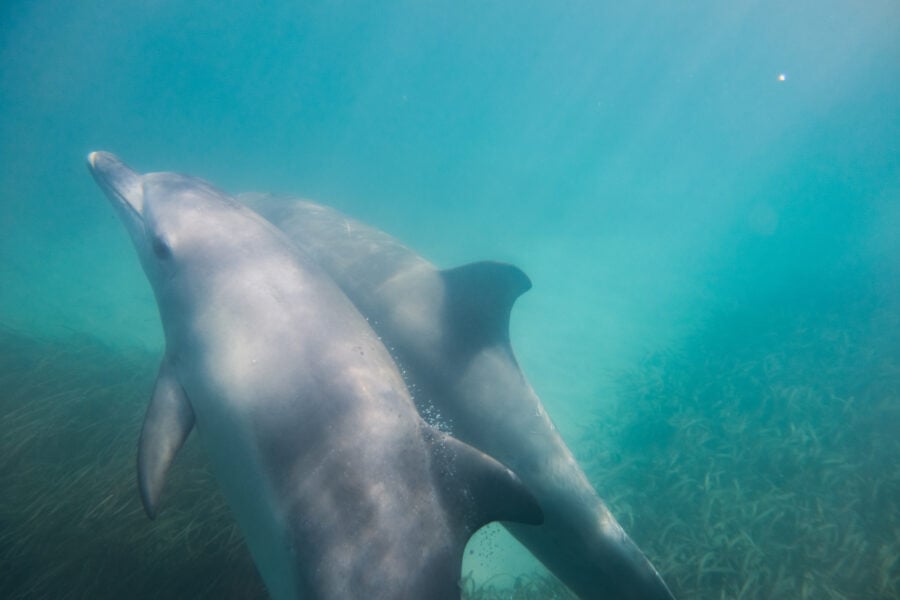How to become a palaeontologist for a day

MENTION DINOSAUR BONES AND many of us recall life-size museum models, or individual fossils housed in a climate-controlled environment, beyond the reach of human fingers.
As for actually handling the bones of these extinct creatures – you might assume only palaeontologists and skilled technicians get to do that.
Enter the Australian Age of Dinosaurs Museum of Natural History (AAOD), found near Winton, Queensland. This not-for-profit organisation aims to educate the public about Australian dinosaurs.
As such, anyone can sign up to prepare 95- to 103-million-year-old dinosaur bones in the laboratory, which is the “largest and most productive fossil preparation facility in the Southern Hemisphere,” says field palaeontologist Trish Sloan.
Participants in AAOD’s “Prep-a-Dino” experience might engage in restoration work, such as puzzling fossil pieces together, or sieving (which allows scientists to look for microscopic material such as teeth, tiny bones, and invertebrates). My visit was devoted to mechanical preparation, which involves using a variety of tools to remove siltstone from around the bones.
Regular stone or dinosaur bone?
The ability to tell dinosaur bone from regular stone material comes down to experience, says Dr Scott Hocknull, a vertebrate palaeontologist at the Queensland Museum in Brisbane. “Mostly you look for colour change: change in colour from the surrounding rock to another, usually darker colour, tells you that you are on to something different,” says Scott.
“Half the time it is nothing … just a mineral growth or a piece of plant material. The other half, it is bone.”
Trish adds that changes in texture are also important. “Dinosaur bone can range in colour from rustic reds to grey-browns,” Trish says. “Some bones have outer layers you call ‘veneer’ and some don’t, so identifying bone can be complex.”
Thankfully, during our experience, a senior technician helped guide us towards bone; Steven Rumbold showed each of us the best places on our stone-entombed fossils to begin working.
These fossils, retrieved from a 2005 dig, belong to ‘Wade’, who represents a new species of sauropod – a long-necked, plant-eating dinosaur. The species is named for the late Dr Mary Wade, former curator of palaeontology at the Queensland Museum, who was involved with just about every major dinosaur discovery in Western Queensland from the mid-1970s until her death in 2005.

An illustration of ancient Australia. Several Australovenator attack a young Diamantinasaurus. (Image: Xing Lida)
Uncovering Australia’s dinosaurs
My chunk of rock has stumped technicians for a while but just yesterday, someone finally uncovered a centimetre-long bit of bone – a vertebra, perhaps, although no one knows for sure. Using the mandatory safety goggles and a large, 12x magnifying glass to see, I begin my day’s mission: to expand this area of exposed fossil as much as possible.
We practice using our ‘wen pens’ – noisy, vibrating instruments that chip away fine bits of siltstone – on areas that appear to be devoid of fossil.
Scott says removing bone from stone is slow work, even if you’re experienced. “The bone has been in the rock for over 90 million years, so what’s another couple?” he says. “The bone is in no rush, and we can’t be either.”
The escalating hope that my work here will reveal something new about this bit of bone keeps me going. I can’t help but pause to touch the ridged, pale grey fossil occasionally, wondering what the creature it carried experienced in life.
One of our breaks includes a tour of the museum’s collection room, where Wade, when complete, will be displayed alongside the bones of other Australian dinosaurs. These include ‘Banjo’ (Australovenator wintonensis), and ‘Matilda’ (Diamantinasaurus matildae), two species discovered nearby (see image, above), of which the museum is custodian.
My time at AAOD is brief when compared to the years of prep time Wade will require. Although my contribution has been miniscule – a couple of extra centimetres of revealed bone, at most – it’s humbling to realise that this fossil, which I’ve touched and helped to expose, will one day be part of a world-class dinosaur display.
Satisfaction level for today’s work? Sauropod-sized.
The Australian Age of Dinosaurs Museum runs Prep-a-Dino throughout the year from $87 per person, per day. Overnight on-site stays are also available. Call (07) 4657 0079 or email [email protected] for bookings.
RELATED STORIES




